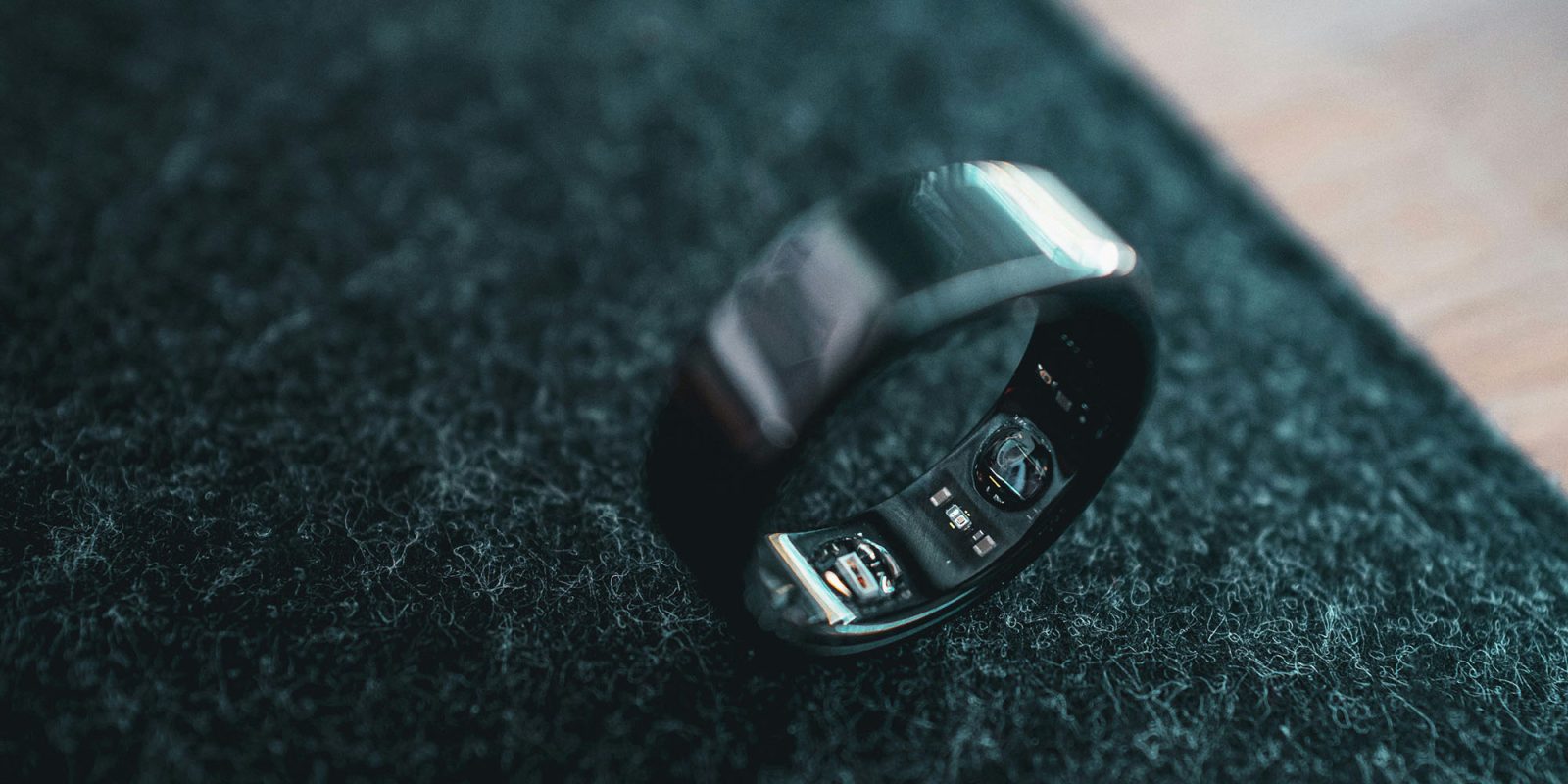
In my first Oura Ring diary piece, I posed the question of whether Apple should make its own smart ring as an alternative health and fitness tool to the Apple Watch.
Three weeks later, I’m ready to answer that question with an unequivocal ‘yes.’ But quite possibly by buying the company …
Farewell to the Apple Watch
My personal Apple Watch era came to a tentative end back in June, almost a decade after I bought the original Series 0 model.
That was partly because my most frequent Apple Pay transactions ceased, but mostly because I accidentally became interested in quartz watches (after successfully resisting the lure of mechanical ones), and found that I really liked the change.
I realized how nice it was to look at my wrist and see something different. After nine years, I was just a bit bored with always seeing the same thing.
Sure, you can mix up the look with different faces, complications, and bands – but in truth, there are only a handful of AW faces I like, and I always quickly reverted to the most minimalist of these: the Simple face, white on black, with a single date complication. Likewise, the white sport loop band suits the ceramic watch so well, I never wore anything else.
I now have three dumb watches, and am faithfully promising myself I’ll stop after adding a black dial model to the collection.
I did hold onto my Apple Watch, as I wasn’t 100% confident I wouldn’t want to use it again, but it has sat unused for two months – so I’m now going to sell it.
My first impressions were confirmed
I summed up my first impressions of the Oura Ring in a few bullet-points:
- I like that I can wear my own choice of watch while doing so
- I really like the fact that I only have to remove and charge it once a week
- It’s a less obtrusive way than a watch to collect health data
- It’s substantially more accurate that the Apple Watch when it comes to sleep tracking
After three weeks of use, all of those points were confirmed. I get 6-7 days before it prompts me to charge it, and I’ll get at least another day out of it even after the prompt. (The battery level shows up top-right in the app.)
It looks completely indistinguishable from a normal ring, and when a couple of friends noticed I was no longer wearing an Apple Watch and asked me about it, they were amazed when I pointed out the ring which took over its health data duties.
I found the sleep data was dramatically more accurate than my Apple Watch, and that’s remained the case since.
I’ve only been able to find very limited data on smart watches versus smart rings when it comes to accuracy. The actual sensors in the Apple Watch and Oura Ring appear to be near-identical, but what the data does suggest is that a watch strap is typically a looser fit than a ring, so that may well explain why a ring is a more reliable device.
I switched to my ring finger, with no loss of accuracy
Oura recommends wearing the ring on your index finger for maximum accuracy, but I found this increasingly inconvenient.
I found it made using the twist-grip gear shifter on my bicycle more awkward, and generally tended to bang against everything from water bottles and coffee mug handles to door handles.
I bought a simple size adjuster to try wearing it on my ring finger, and found this much more comfortable with no loss of accuracy. I swapped out the original size 12 ring for a size 10 to get the correct fit for my ring finger, and I’m now scarcely aware I’m wearing it.
I would strongly recommend opting for your ring finger if you’re thinking of buying one.
It offers reassuring data
I found quite a lot of the data is reassuring.
For example, if our sleep is disturbed, it’s common to think that we’ve been lying awake for longer than we have. Part of the reason for this is a sleep stage known as N1 light sleep – the first stage of light sleep. It’s not unusual to actually think we were awake when we were in fact in N1 sleep, so it’s reassuring to be able to see that, actually, we got enough sleep.
Similarly with fitness data. I’m not a gym guy – I’ve always found exercise for exercise’s sake too tedious. But I do walk and cycle a lot, and take stairs rather than elevators, so my guess would have been that my fitness isn’t terrible, but neither is it great.
The app had me pleasantly surprised. For example, after it prompted me to do a 6-minute brisk walk test, used to measure oxygen intake, it told me mine was high. (Note: A medical-grade test uses an oxygen mask to actually measure flow, while all a fitness tracker can do is measure respiration, so it’s only a rough guide – but I’ll take it.)
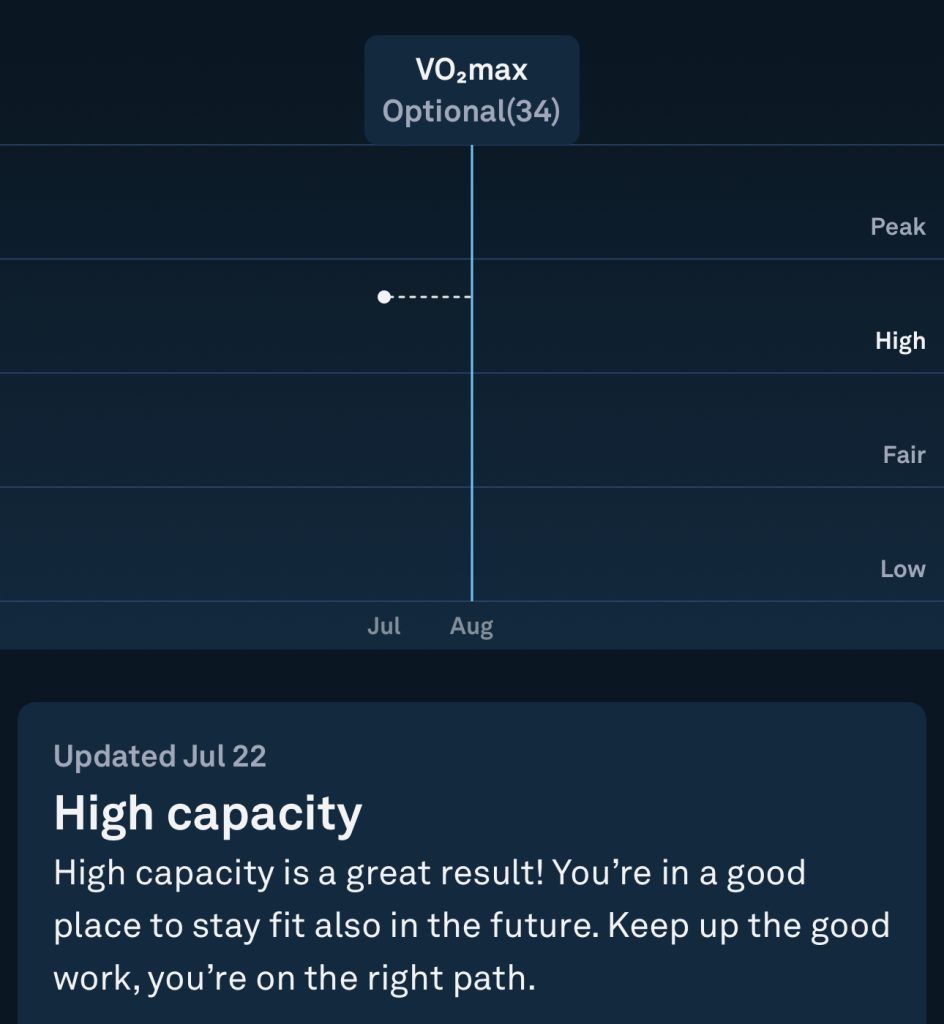
Similarly, after collecting about a fortnight’s worth of data, it told me my cardiovascular age is in decent shape.
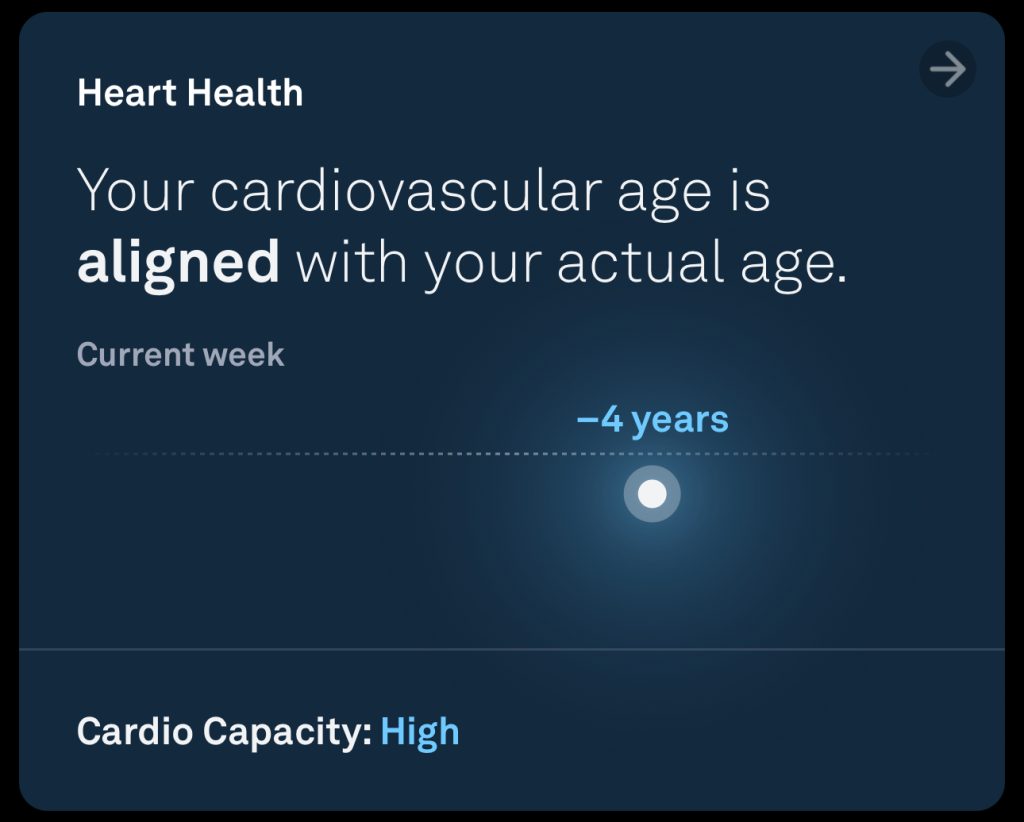
The app feeds you data intelligently
Initially, my jury was out on the Oura app, fearing information overload. But my experience of it over time is that it feeds the information to you very intelligently.
For example, it starts with those four key numbers:
- Resilience
- Readiness
- Sleep
- Activity
You’re able to call up any additional data you like. For example, I went to bed later than usual last night, and woke feeling more tired than usual (I’ve never been one of those lucky people who wake feeling refreshed and raring for action, so my personal scale ranges from ‘Bleargh!’ to ‘Ok, day, let’s do this thing.’)
In tapping on the sleep tab, I could see I got less deep sleep than usual, and the app basically told me off for staying up late:
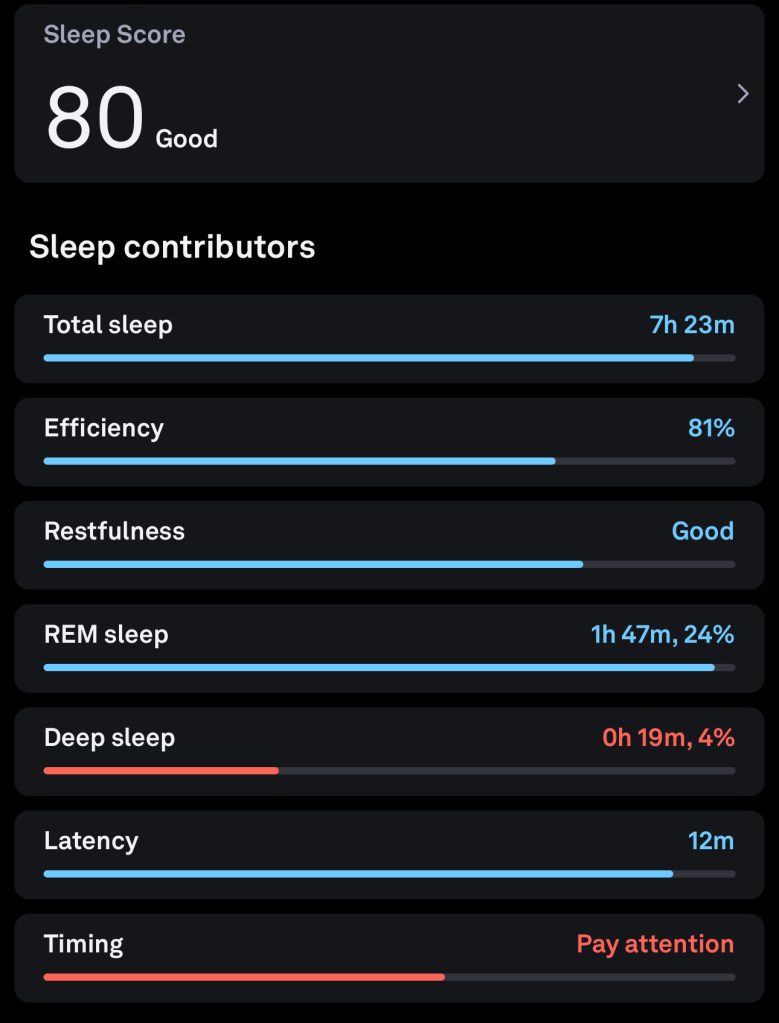
What I thought might annoy/overload me was all the proactive info it decides to show me. Some of this is personalized. For example, it noticed I slept better when going to bed at around 11pm, so proactively recommended considering that, and prompting me to start winding down an hour or so beforehand.
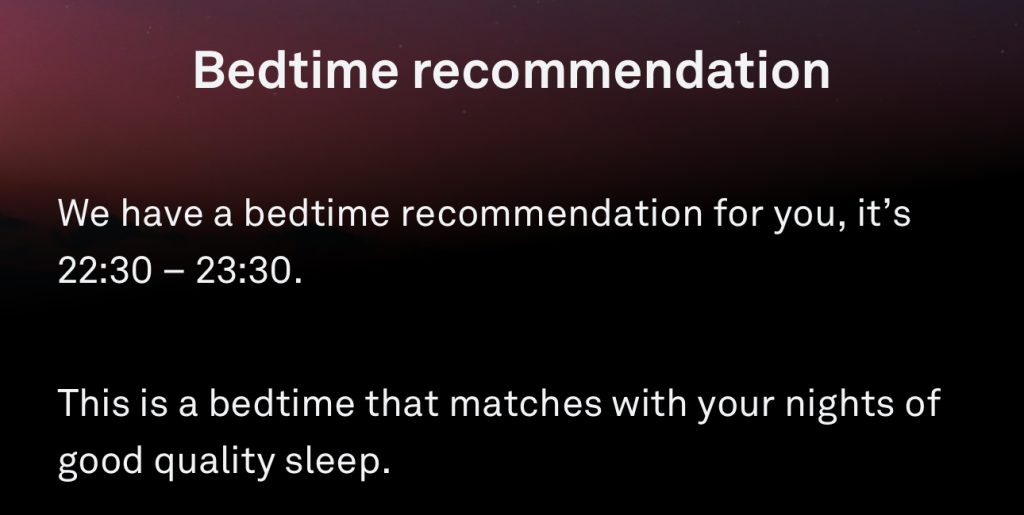
It also noted I slept better after a medium amount of exercise, rather than after a lot or a little. I found that I came to really appreciate these individualized tips.
But the app also offers more general health tips. In one example, it suggested experimenting with caffeine intake, to see whether that had any impact on health metrics. In another, it offered some self-care advice. Neither were based on my own data, but I did find they were well paced, offering something new every few days.
Passing the subscription test – and why Apple should maybe buy the company
I’m really not a fan of subscriptions. Give me a choice between buying something outright, and subscribing to it, and I’ll almost always choose the outright purchase model. I have exactly one streaming subscription (YouTube Premium), and just four app subscriptions.
So I was initially somewhat dismayed when I discovered that the Oura Ring requires a monthly or annual subscription to get access to anything beyond the four core numbers. With an Apple Watch, in contrast, all the data is yours once you’ve bought the hardware.
But I have to say the app has completely won me over. It’s clear that a huge amount of thought has gone into deciding what to show as standard, when to prompt you with personalized alerts and suggestions, and when to offer more general advice.
Apple’s Health app is visually beautiful, and very easy to use, but it’s never made me feel like I have a personal health and fitness coach in my pocket; the Oura app does. That, more than the hardware, is why I think that perhaps Apple should buy the company. I signed up for an annual subscription even before the one-month free trial ended.
So, I think that was probably a short diary series! First impressions, and a decision to keep it and pay for the subscription. But if anything else does stand out further down the line, I’ll do an update then.
Photo by Jerry Kavan on Unsplash
FTC: We use income earning auto affiliate links. More.

 4 months ago
125
4 months ago
125







 English (US) ·
English (US) ·